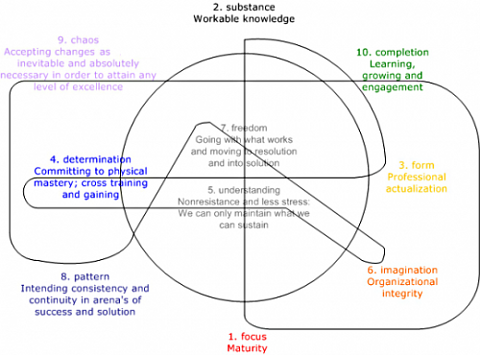Scratch that itch!
January 18, 2006 § Leave a comment
Many business people seem to believe that open source software is not “professional,” e.g. that it is more prone to fail than closed software. Take a trip into the past … read about reliability of open-source software in “The Cathedral and the Bazaar“.
The cathedral and the Bazaar paper was behind Netscape’s innovative decision to take its client software open source. It describes a bazaar style of software development strategy that depends on open source and leads to high reliability and quality.
Open Source technologies tend to start from within, from a developer scratching her or his own itch in her or his own context. In other words, a particular open source tool, in its early development phases is particularly suited to meet the needs of its creator first, and only in second instance the needs of people in similar contexts with similar itches, like colleagues and other developers. This guarantees a creator has substantial workable knowledge of what other users of the tool might wish to include as features.
The code is freely modifiable by others, and if a developer wants to branch off of the code for a particular context, that’s cool! With more developers working on similar tools, cross training and gaining increases, and certain codes can be fed back to the trunk for organisational integrity. Some tools make it past this phase, and branch into several tools, intending consistency and continuity in arena’s of success and solution in other contexts.
Originally developed in a development context, these tools often do not meet demands of people that cannot install, configure and code such tools (yet). Even for other developers it can be hard to work with these tools, for documentation is sometimes missing or hard to find, and the code is sometimes not self-documenting (though most is ;-).
Most weboriented software has made it to more maturity and non-techies can easily engage with both the tool and the community of users. Such tools have one-click install when possible, or web browser interfaces for installing and configuring the tool. Most have special visual editors allowing users to not have to know coding, multilanguage support, timezone support, and support for more platforms, like other operating systems and databases.
And, some tools that branched off, recombined with functionality of other (open source) tools. For example, a few tools provide portal logic allowing users to flexibly shape their own portal, with all sorts of add-ons, working towards tensegrity self-organisation.
A lot of progress has been made to bridge the gap between open source tools and non-technical (business) environments. As open source customers we have received many great gifts, not yet fully meeting demands of the wide variety of potential customers.
We hope that working from what works and what doesn’t, open source software will continue to move to resolution and into bridging what remains of the gap between the two, open source developers and non-technical (business) environments.
We also hope the IT industry as a whole will learn from the success stories of passionate people using the bazaar style and agile development, and that feedback, pairing, truly engaging with and listening to our users and customers, and accepting change for ourselves as inevitable, will be recognized as key ingredients for excellence and delivering high quality software in the near future.
Related Articles
- The Case For Open-Source Design: Can Design By Committee Work? (smashingmagazine.com)


Leave a comment